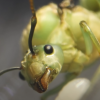The name pretty much explains it. Which is better, pros cons, and whotch should I use for my Formica and mermica colonies?
- Formiculture.com
- Forums
- Gallery
- Members
- Member Map
- Chat

Hmm, what about layering both, sanded and unsanded grout?
 |
Market Place →
General Market Place →
FormiFactory's Nest ShopStarted by FormiFactory , Dec 8 2025 |
|

|
|
Market Place →
General Market Place →
Possible THA Formicarium for sale in ArizonaStarted by sacs4010 , Aug 20 2025 |
|

|
||
Market Place →
General Market Place →
Temnothorax's Formicarium StopStarted by Temno , Jun 30 2025 |
|

|
||
Anting →
General Anting →
Ants in the PNWStarted by 1pcilesshih , Jun 21 2025 |
|

|
||
Ant Keeping →
General Ant Keeping →
Making a terrarium for antsStarted by drziolo , May 17 2025 |
|

|
0 members, 1 guests, 0 anonymous users